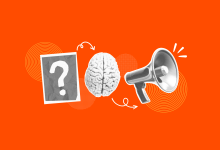Literacy
Find and share strategies for helping students read for knowledge, write coherently, and think critically about the written word.
Tailoring Instruction to Support English Language Learners
Setting up a self-contained classroom for English language learners bolsters academics and helps students reach fluency faster.Incorporating Images in the Classroom
By treating media like text, teachers can create a fast, relevant, and affordable lesson that stimulates lively discussion.Tips to Help Students With Their Handwriting
These simple tricks to improve motor skills can empower young learners to feel more in control of their handwriting.Question: What Are the Book Series Your Students Can’t Put Down?
Share and learn from your colleagues!2102An Administrator’s Approach to Supporting Reading Instruction
There’s no one-size-fits-all approach to reading instruction, but this award-winning principal shares what’s working at her school.781Activating Learning by Milling to Music
When students pretend they’re at a fancy party making small talk, a simple brainstorm for writing ideas becomes more lively, more cooperative—and more effective.14.9kIs it Time to Drop ‘Finding the Main Idea’ and Teach Reading in a New Way?
Some schools are changing the way they teach reading—based on research that shows background knowledge is more critical to comprehension than general skills like ‘finding the main idea.’54.7kTips for Improving Vocabulary Instruction in Middle School
These strategies go beyond flash cards to help students learn new terms and apply them in novel contexts.1615How to Teach Handwriting—and Why It Matters
Teaching young students how to write by hand before moving on to keyboarding can help improve their reading fluency as well.58.9k4 Myths About Evidence-Based Literacy Instruction in the Early Grades
A look at a few common misconceptions, plus tips on effective practices for teaching young students to read.9922Using Movement to Teach Vocabulary
When students explore new words through movement, they understand them better, retain them longer, and feel more empowered to use them.9.4kMaking In-Class Reading More Engaging in Middle and High School
Deep thinking and active collaboration aren’t mutually exclusive. These strategies extend silent reading by centering student engagement.152.2k4 Reading Strategies to Retire This Year (Plus 6 to Try Out!)
A look at a few popular literacy practices that shouldn’t make the cut—along with fresh strategies that experienced teachers and literacy experts recommend instead.26.9k5 Ways to Support Students Who Struggle With Reading Comprehension
These strategies can help students who are able to decode well but have difficulty understanding what they read—and they’re beneficial for all students.43.5kReading Aloud to Middle School Students
Hearing books read aloud benefits older students, enhancing language arts instruction and building a community of readers.45.3k














